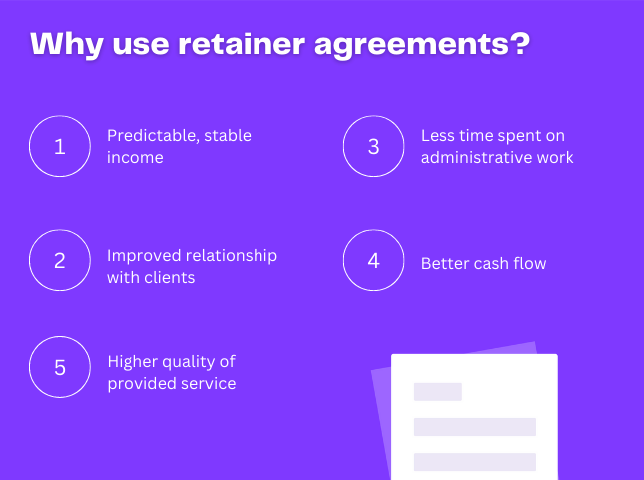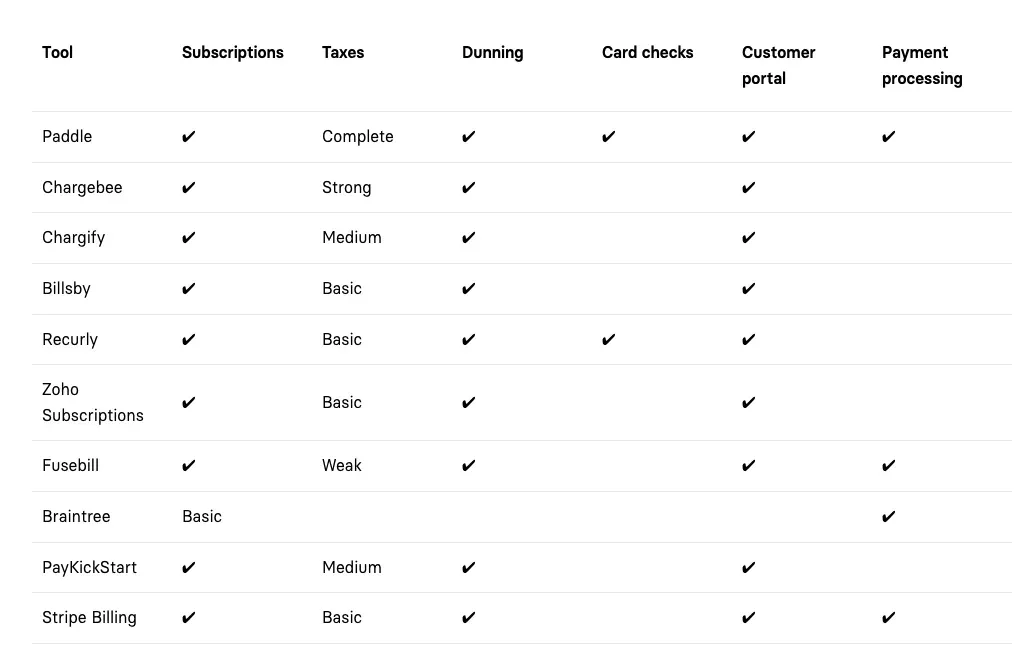How to Choose the Right Billing Method: Retainer vs. Hourly for Consultants
Looking for the ideal billing method for your small business? Here's a complete rundown of the pros and cons of retainer and hourly billing methods.
— Propoze

Consultants often grapple with the decision of whether to charge clients on a monthly retainer or hourly fee basis. A single choice can significantly impact their revenue, client relationships, and overall business model.
Retainer vs. hourly is a common debate in many conversations of tech companies, creative agencies, and independent consultants.
Our article goes deep into the intricacies of monthly retainers and hourly billing, providing you with insights and strategies to help you make informed decisions that align with your business goals and client expectations.
Key takeaways
- Consultants should consider retainer billing for stable, predictable income and to secure long-term client's commitments, while hourly billing offers flexibility and ensures payment for actual time spent.
- Transitioning between billing models can be facilitated by assessing business needs and leveraging technology like cloud-based solutions to manage diverse billing structures efficiently.
- Effective communication with clients is essential when implementing a billing strategy, as it helps in setting clear expectations, negotiating rates, and choosing the right billing method for each project.
Retainer vs. hourly — What are the main differences?
It's easy to conclude, each of these billing methods comes with a specific set of pros and cons. Depending on your and your clients' c way of doing business, you may choose either one.
Still, we'll give you a detailed overview of both billing methods.
How does retain billing work — a fixed commitment
Retainer billing is like a VIP pass for your clients, giving them the assurance that you're always on standby for their needs. It's a win-win: clients enjoy priority support, and consultants benefit from a steady income stream. This model is especially popular among professionals who offer ongoing services, such as legal advice or marketing strategies.
Here's a quick rundown of what retainer billing can look like:
- Evergreen retainer fee: A replenishing fund for continuous legal support.
- Classic retainer fee: An upfront payment ensuring a lawyer's availability.
- Security retainer fee: An advance for services where the client retains fund ownership until work is done.
Retainer agreements are not just about the upfront payment; they're about building a partnership based on trust and commitment. While the retainer is a deposit, it's also a symbol of the client's investment in a long-term relationship.
Remember, retainers are not the final bill. They're a starting point, and if the work done is less than anticipated, clients can expect a refund. On the flip side, if more time is needed, additional funds may be required.

It's a flexible setup that can be tailored to suit both parties' needs. And for those looking to diversify, tools like Acuity Scheduling and Clio offer ways to manage various billing methods, from retainers to hourly rate.
The hourly approach: flexibility and accountability
The hourly billing model is like a Swiss Army knife for consultants - versatile and ready for anything. It's the go-to for those who thrive on variety and whose work doesn't fit neatly into a predictable box. Here's why it's a smart pick:
- Flexibility: You can pivot as projects ebb and flow, scaling your hours up or down to match the workload.
- Transparency: Clients love clarity. They see exactly where their money goes, hour by hour.
- Accountability: It keeps you on your toes. Every hour is a unit of value you deliver, making it easier to justify your rates.
But remember, with great flexibility comes the need for great management. The hourly model demands meticulous tracking to ensure every minute counts - and pays.
It's not just about clocking in and out; it's about aligning your time with client expectations and project demands. And when the scope is as clear as mud, hourly billing can be your beacon, guiding you through the fog of undefined tasks and shifting goals.
Just be sure to stay adaptable and ready to adjust as the project landscape shifts beneath your feet.
Comparing the pros and cons: Retainer vs. hourly
When it comes to billing, consultants are often torn between the predictability of monthly retainer fees and the flexibility of hourly rate. Retainers offer a sense of financial stability and foster stronger client relationships, as they allow for a more strategic partnership.
On the flip side, hourly billing aligns costs directly with the time invested, for example ensuring clients only pay for what they need.
- Retainer pros:
- Stable income
- Better client relationships
- Less administrative work
- Hourly pros:
- Pay-as-you-go flexibility
- Direct accountability for hours spent
- Easier adjustment for scope changes
Choosing the right billing method hinges on understanding your business's unique needs and the nature of your client engagements. It's about finding the balance between a steady revenue stream and the ability to adapt to changing project scopes and client demands.
Whether it’s a new project request or ongoing support, the key is to match the billing method to the task at hand.
Generally, team involvement might also dictate the choice, as monthly retainers can cover a broad scope of work with less work needed to manage billing, while hourly rate could be better for projects requiring detailed tracking of hours and tasks, including phone calls and specific delivehourrables.
Real-world scenarios: When to use which model
The choice between the monthly retainer and hourly billing often hinges on the nature of the new project and client needs.
For projects with a well-defined scope and duration, hourly billing shines, offering transparency and accountability for both parties. It's the go-to for tasks where the effort is clear-cut and predictable, generally involving less work.
On the flip side, retainer billing is a match made in heaven for ongoing support or when a client requires a consultant to be on standby. High-level consultants, for instance, lean towards project-based retainers for strategic planning and management advisory due to the job's demands.
Here's a quick example of when to opt for each:
- Retainer billing: Ideal for long-term projects, strategic roles, and when consistent availability is key.
- Hourly billing: Best for short-term tasks, ad-hoc work, or when the project scope is variable on an hourly basis.
Remember, the goal is to align your billing method with the value you provide. Legal services, for example, may use an hourly rate for clients needing limited-time support. It's all about finding that sweet spot where your expertise meets client expectations.
And don't forget, communication is crucial when implementing any billing strategy or a budget. Make sure your clients understand the benefits and structure of your chosen model.
What you need to know before you change your billing model
Before you leap into a new billing model, it's crucial to take stock of your current business landscape. This isn't just about crunching numbers; it's about understanding the core of your service delivery and how it aligns with your clients' expectations.
- Evaluate your business structure and service offerings. Are they conducive to a retainer model? This might mean rethinking your packages to ensure they're attractive as ongoing services.
- Identify which services could be bundled into a subscription. Not everything will fit neatly into this model, so choose wisely.
- Prepare for the shift by anticipating potential challenges. Client retention will be key, so consider how you'll maintain value and satisfaction over time.
Remember, transitioning to a retainer model is more than a pricing change; it's a strategic move that can redefine your client relationships and business stability.
Once you've done your homework, you'll be better equipped to make an informed decision about whether a retainer or hourly billing method best suits your business's future.
How to shift from hourly to retainer billing
Making the shift from hourly to retainer billing can feel like navigating uncharted waters, but with the right approach — it's a journey that can lead to more predictable income and stronger client relationships.
Start by evaluating your current hourly rates and client base. Are there clients who consistently require a set number of hours each month? They might be prime candidates for a retainer model.
Here's a simple roadmap to guide your transition:
- Identify which clients or services are best suited for a monthly retainer arrangement.
- Calculate a fair retainer fee based on historical hourly work and projected future needs.
- Communicate the benefits of the new model to your clients, emphasizing stability and dedicated resources.
- Negotiate the terms of the retainer, including scope and duration.
- Implement the retainer agreement and monitor its effectiveness regularly.
Remember, transitioning to a retainer model is not just about making difference on how you bill, but also about reinforcing the value you provide. It's an opportunity to deepen client trust and commitment.
While the transition requires careful planning and clear communication, the end result can be a more sustainable and mutually beneficial arrangement. Diversifying your billing options, including retainers, can also be a strategic move to accommodate different client needs and preferences.
Use different tools to manage different billing methods
In the digital age, SaaS tools are affordable, scalable, and easy to use, offering a lifeline for consultants juggling between retainer and hourly billing methods. These tools not only streamline business activities but also come with cost-friendly pricing plans and immense scalability potential, making them accessible from any device.

Embracing technology in billing is not just about convenience; it's about staying competitive and responsive to client needs.
Here's how you can leverage technology to manage your billing models effectively:
- Choose a reliable software that simplifies payment processing and automates billing cycles.
- Use project management tools to keep track of progress, collaborate with team members, and monitor key performance indicators.
- Implement a client portal that provides transparency and real-time access to billing information, fostering trust and satisfaction.
Remember, the right technology can make the transition between billing models seamless, ensuring you maintain a steady cash flow and build stronger client relationships.
How to successfully implement different billing methods
When it comes to billing, whether you're on a retainer or charging by the hour, clear communication is your cornerstone. It's not just about sending invoices; it's about setting the stage for a transparent relationship with your clients. Here's a quick rundown on how to keep the lines open and clear:
- Set up clear expectations with polite communication from the get-go. This means being upfront about your billing method, payment terms, and what they cover.
- Automated reminders can be a lifesaver. They keep you and your clients on the same page without the need for constant back-and-forth.
- Always be ready to offer flexible solutions. Life happens, and sometimes adjustments are needed. Show your clients you're willing to work with them.
- Remember, legal action is a last resort. It's better for everyone if disputes can be resolved amicably and professionally.
Proactive communication is key. Informing clients about upcoming payments and any changes in your billing process helps prevent misunderstandings and maintains trust.
By integrating these practices into your billing strategy, you'll not only foster better client relationships but also pave the way for smoother financial operations and increased satisfaction.
Which billing model to choose — retainer or hourly?
Deciding whether to go with retainer or hourly billing isn't just about the dollars and cents; it's about choosing a strategy that shapes how you connect with clients and how steady your cash flow is.
We've dug into both billing models, spotlighting the perks and pitfalls to help you land on the right decision.
Are you all about the consistency and long-term relationships that come with monthly retainers? Or do you lean toward the adaptability and pay-for-what-you-use approach of hourly billing?
The goal is to match your billing setup with what you're aiming to achieve in your business and what your clients expect from you.
Sometimes, the best path forward mixes a bit of both billing styles, customized to fit the specifics of each project and client relationship. Your chosen billing method should do more than just bring in revenue; it should propel your consultancy forward, fostering flexibility and resilience.
And let's not forget about setting expectations clearly, particularly when it comes to calls, face-to-face time, and other interactions.
This is especially important in fields like legal services, where the hourly fee needs to cover everything you do. Transparency can prevent misunderstandings and ensure everyone's on the same page right from the start.
And when you have decided which billing method to go with — it's time to send that proposal and close the deal. The best way to do it? Propoze.
Start your free trial today and prepare a visually-striking and neatly structured proposal in just minutes! Click on the button below and start winning new deals today.
Frequently asked questions on billing methods
Here are some of the most asked question on billing methods and the answers you've been searching for.
What are the main differences between retainer and hourly billing models for consultants?
The retainer billing model involves a fixed amount monthly fee for a set number of consultancy hours, providing stability and predictability in revenue. Hourly billing charges clients based on the actual hourly rate spent on consultation, offering flexibility and ensuring payment for every hour worked.
The choice between them depends on the nature of the work and the independent consultants' or client's preference for financial predictability or flexibility.
How can consultants transition from hourly to retainer billing?
Consultants can transition by assessing their business needs, considering client relationships, and evaluating the predictability of work. They should communicate the benefits of a retainer model to clients, such as priority support and resource allocation.
Leveraging technology like cloud-based management solutions can facilitate diverse billing options, making the transition smoother. An advance payment is often required to secure services, providing a cash flow advantage for the consultant.
What are some strategies for choosing the right billing method for my consultancy firm?
To choose the right pricing model, understand the pros and cons of each model. For project-based work with clear deliverables, a retainer may be more suitable. For varied tasks with unpredictable hours, hourly billing could be better.
Consider your clients' preferences, the complexity of projects, and the need for flexibility. Be open to combining different billing methods, such as flat rates or contingency fees, to fit your firm's and clients' needs.
Transparency about advance payment requirements and ensuring clients feel they are getting their money's worth are key, even for brief phone calls or consultations.